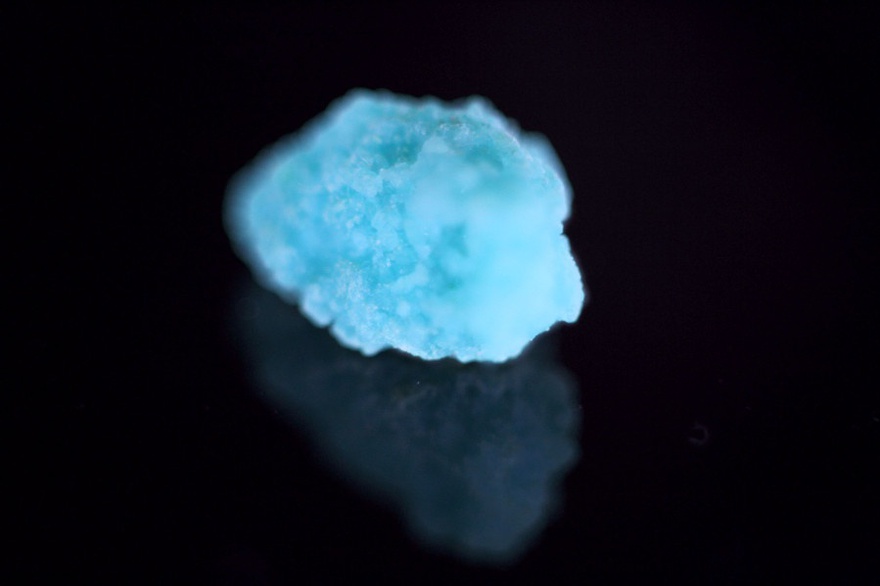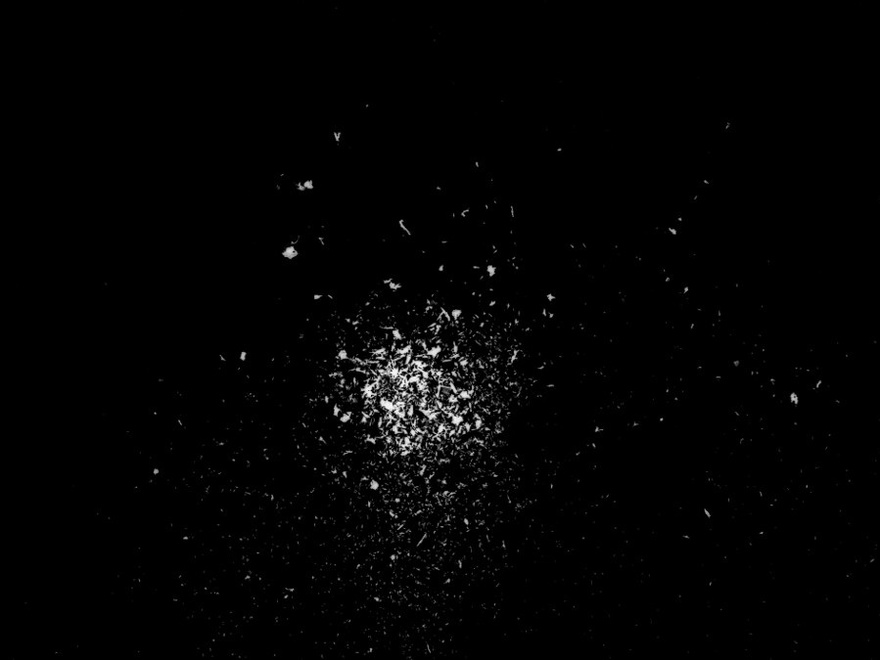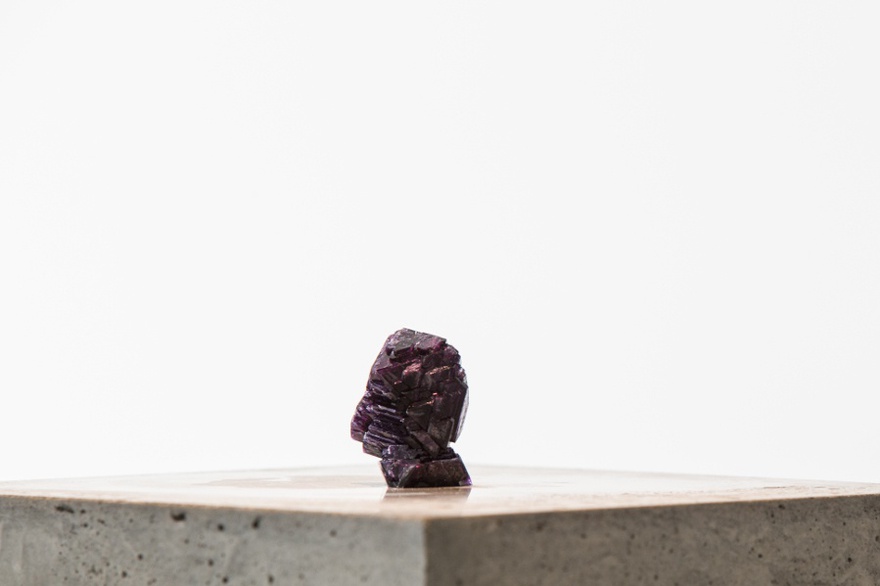Reviews
Collapsing Clouds of Gas and Dust
Vartan Avakian at Marfa’
In Beirut there is a museum hosting the widest collection of minerals in the world – 1,600 excavated pieces holding timeless names such as Chalcopyrite, Orthose, Apatite, Bixbyite, Whewellite or Wardite that one would expect to read in a sci-fi novel. These large minerals of surprisingly geometrical shapes and surreal colours, nearing fluorescence in some cases, are an expression of the intangibility of time. 'Gormanite / (Fe2+)3Al4(PO4)4(OH)6•2(H2O)', reads the label associated to a piece resembling a fossil. Scattered around the collection are objects whose familiar names break with abstraction, seemingly resonating with economical value and the double-edged implications of the historical mining discoveries of our era – gold, copper and other gypsum.
Crystals of a much smaller scale originating from a different excavation are exhibited at Marfa' – the new art gallery founded by Joumana Asseily in the developing industrial neighborhood bordering the port in Beirut – as part of Vartan Avakian's first solo exhibition in Lebanon. Avakian worked with an art conservator and a team of chemistry researchers to complete the project, creating minerals produced from dust – a mix of soil, hair, meteorite particles, human residues, film debris, and cells – collected from the abandoned Barakat building in Beirut: a place with a history tightly associated to the civil war (it once served as a vantage point for snipers of the Christian militias). This is not the first time Avakian has worked with this process: for the Arab Fund for Arts and Culture's public art commission in Dubai in 2014, he extracted water from the Burj Al-Khalifa Lake and encouraged whatever impurities it contained to crystallize. Displayed on six raw concrete pillars, the resulting crystals are organized by type – white, blue, green, purple, lanceolate and anthropomorphic. Deprived of captions and simply entitled Collapsing Clouds of Gas and Dust (2015), the induced metamorphosis of ephemeral substances taken from a neglected space into a solid element seems to embody the cyclic aspect of history at the universal and national level.
As part of the exhibition, Avakian also presented Suspended Silver (2015) – a series of images presented on the other side of a wall that divides this gallery in two. To make these, he scanned the silver particles collected in the film debris of a studio photo archive found in the same building, before enlarging and printing them. A delicate balance between abstraction and depiction, the process results in minimalistic, monochromatic compositions of scattered powder. Featured on an abyssal black background, the abstract patterns of film debris appear like miniaturized representations of geometric, cosmic and spatial formations.By stripping the images of their original contexts, Avakian shifts attention from image to material so as to examine the specific qualities of matter. In the case of the Barakt Building, Avakian notes in the booklet accompanying the show: 'The dust generated by the monument's "life" holds its aura.' Likewise, 'By finding and printing these silver particles – the material equivalent of pixels – the composition of information that produced the original photographs is reshaped.' A recent member of the Arab Image Foundation, Avakian takes a stand on the use of existing photographic material: that an image should not necessarily be restored but rather kept in its found condition to broaden the scope of understanding it within the frame of certain events and contexts. The act of archiving is also an act of creation, or even crystallization, and Avakian asserts this in clear terms.
The relation between the physical and digital fragments in Avakian's exhibition echoes the work of artists such as Ben Rubin, exploring in his practice data-mining techniques and the consequent visual and physical impoverishment of virtual information. Just as Rubin questions the way in which data changes our approach to contemporary history and reassembles its various pieces into a meaningful puzzle, Avakian explores the archive as a material to draw a counter-narrative. Aside from the fact that mineralogy refers to each sample as a species, each crystal has also been through an unexpectedly long history: in the most immediate sense, the history of an abandoned building and its various inhabitants, from the snipers who were hiding inside it during the civil war, to the insects who took over after they left. As is the case with the photographs, actions have crystallized in the building itself in novel forms, both physically manifest and immutable.
Collapsing Clouds of Gas and Dust is on show until 12 December 2015. For more information, visit: www.marfaprojects.com








